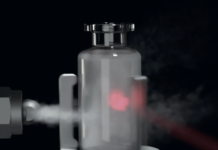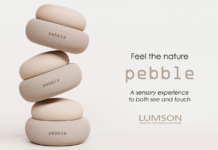
Zero in Pack is the “off-shoot” company of Eurovetrocap that offers environmentally-friendly packaging. One of many, you’ll probably say. Well, not exactly.
Zero In Pack, whose name is already a declaration of its mission, offers ONLY eco-friendly solutions that are accompanied by an LCA analysis.
It’s a tall order, that of sustainability, being one of the most complex and difficult because the word “sustainability” is on a lot of lips but few are actually able to demonstrate it with facts. And even fewer so, with numbers.
Zero in Pack, with its LCA analyses of products – a tool developed in collaboration with Bocconi University’s Green Department and based on 16 parameters – is not only committed to doing this, but has made it its mission and when it speaks about green packaging, it does so in a clear and transparent way, supporting its packaging offerings with objective data.
Everything started with an idea from a team of managers and professionals in the sector comprised of: Giampaolo Herrmann, General Manager and CEO of Eurovetrocap; Eleonora Cattaneo, CEO of Parispack; Costantino Cattaneo, Ceo of Tenuta San Jacopo; Stefano Gulli, a Politecnico-educated materials engineer, and Simon Silvano, sales representative with extensive experience in the world of packaging and a Masters in circular economy and plastic materials. They gave shape to a dream of sustainability, translating it into cosmetic packaging. Their story is in this interview.
How did the Zero In Pack project come about?

Giampaolo Hermann: The project is our group’s concrete answer to the appeal from the European Commission- derived from the feeling of an increasingly growing number of both European and non-European citizens and companies that said, and I quote: “Climate change and environmental degradation are an existential threat to Europe and the world. To overcome these challenges, Europe needs a new growth strategy that will transform the Union into a modern, resource-efficient and competitive economy, where 1) there are no net emissions of greenhouse gases by 2050; 2) economic growth is decoupled from resource use; 3) no person and no place is left behind. In order to do this, we must boost the efficient use of resources by moving to a clean, circular economy, restore biodiversity, and cut pollution”.
Simon Silvano: Our mission is to offer packaging dedicated to the world of cosmetics with the lowest environmental impact possible, without compromising on the protective function that packaging must provide for a formula and maximizing the packaging’s perceived quality and the user experience with it.
With Zero In Pack, we are committed to offering maximum transparency on our packaging’s environmental impact through an LCA (Life Cycle Assessment) analysis which comes with every article in our range. You’ll probably ask yourselves how it’s possible to supply such detailed information. Well, the answer is: equipping ourselves with the tools able to compare, account for, and explain how the impact of an item varies with its weight, material chosen, and countless other parameters.

Will the solutions offered by Zero In Pack have low environmental impact?
Giampaolo Herrmann: in truth, speaking about “low environmental impact” without contextualizing the concept wouldn’t be correct. We could define “low” in an absolute sense if it were zero, since zero is objectively low. We want to be “transparent” in our communications and define that zero, which is also part of our name, as the ultimate goal, the point where we aim to arrive and not the starting point.

Eleonora L’Hoir Cattaneo: Our work, the Zero In Pack project, is aimed at reducing impact. Step by step. When we study and come up with a product to offer, we’re always comparing it to its predecessor and to an item that we manufacture and we set ourselves a goal of explaining to the customer how and why it’s better than the previous one and how we were able to reduce its environmental impact.
Giampaolo Herrmann: Confirming what I’ve said, I can state that in this period, we’ve been sending our clientele a set of our main products with which we provide evidence, with detailed studies outlining the way they are lower impact solutions compared to our other more.
What are the parameters that affect impact that need to be considered?
Giampaolo Herrmann: new materials, new manufacturing technology, process efficiency, new distribution services…. And since these are parameters that evolve over time, there will always be a way to work with them that will produce a product with a lower environmental impact. We could say that it’s a “work in progress”.
In your catalogue, are there already packaging solutions that have these sustainability characteristics?

Simon Silvano: the initial offerings from Zero in Pack, for which please refer to the website zeroinpack.com, are based on a complete range of standard articles- and therefore also available for customers who would like to test them out in small quantities – in glass, plastic, and aluminum, where the use of recycled raw materials is a priority and where the end of life phase of the product and its disposal play a key role.

Let’s talk about your sustainable solutions…
Giampaolo Herrmann: Let’s start with post-consumer recycled materials, a piece de resistance in our toolbox. Working with our partner Zignago Vetro, we’ve created a complete line of cosmetic packaging in which the percentage of post-consumer recycled glass arrives at 60%. The range is comprised of a series of screw cap bottles that are available from 15mL to 100mL as well as a 50mL jar. With these, we’ve paired capsules, covers, droppers, and pumps that have a percentage of their weight attributed to recycled materials ranging from 40% to 90%.
Significant investments have also been made to offer customers refillable solutions where the final consumer can reuse the main container while simply replacing the cosmetic product with a refill. In this case, the range is composed of glass airless bottles from 15mL to 30mL and two 50mL glass jars.
We have also created a variety of items made entirely with one material to facilitate recycling options. Something important to think about for plastics, aluminum, and wood. To complete our offerings with solutions that are more classic and widespread, we also have bottles in PE and PET obtained from recycled materials.

Anything new in the works?
Simon Silvano: Yes! In the near future, we’ll be launching a totally innovative product onto the market. It’s a cosmetic dropper that is 100% mono-material plastic, a product that was developed in response to a demand originating from our customers. We like to see it as a tangible sign of the fact that we listen to our customers and a case in point of how innovation and low environmental impact are concepts that pair perfectly with each other.
Zero In Pack works on LCA analyses in order to understand where it can minimize the environmental impact of packaging. What are the parameters that you evaluate?

Stefano Gulli:
the model, developed in collaboration with the Green Department at Bocconi University uses the following as parameters (in addition to weight and size of the container): all the materials that make up the container (whether they are virgin or recycled), the manufacturing process and the place of production or origin, the secondary packaging, the eventual decorations used on it, the mode of distribution, and the product’s end of life.

How does the model work?
Stefano Gulli: It’s important to clarify that the model we use is able to provide a simplified LCA analysis. We preferred to focus on a stream-lined, easy-to-use tool that is able to show our clients what happens to a product’s impact in real-time if we change one or two parameters. This model allows us to understand and explain how and why the use of one accessory with respect to another varies the impact or why it would be a priority to favor a particular decoration type over another.
It’s not enough to know that a jar made of recycled glass with a recycled cover is “better” than a traditional one, we need to understand to what degree it’s “better” and why. And a detailed LCA analysis is the perfect tool to demonstrate this with a technical and scientific approach, that is, in an objective manner.
A tool that is of great help when it comes to creating “green” products that are already in the planning phase as well…

Costantino Cattaneo: Exactly! This approach is useful both for products that are already in the catalogue, as well as for those that we’re planning on manufacturing because just by estimating the environmental impact ex-ante, that is, in the planning phase, we can improve the development of the item and minimize that impact. The model analyzes 16 different impact categories, among which CO2 is the most notable, and explain in which phase in the life of the product the impact is generated.
Without prejudice to what we said earlier, that is, there are several variables involved in the LCA of a product, are there any materials than are “more sustainable” others?
Stefano Gulli: We can say that sustainable solutions exist but we would need to verify the possibility of using them in cosmetics packaging that, I remind you, must be above all safe, durable, and aesthetically-pleasing…
For our part, in addition to continuing testing on bio-based, biodegradable, and compostable materials – one of particular interest being the test on PHA carried out by the Polytechnic of Bologna and with an important Italian contract filler -, at the moment, we’re working on recycled materials.
The main challenge, in the world of cosmetics, is that of bringing together safety and aesthetic appeal.
On the safety front, where adequate certifications are not present, we’ve identified materials on which we had migration tests carried out by independent laboratories. On the aesthetics side of things, in addition to obtaining principal recycled materials that are widespread at the European level, we’re constantly working with suppliers to have homogeneous and cosmetic-quality materials supplied to us. In June, thanks to the arrival of a new production line, we will increase our coextruded bottle offerings made of 100% PE suitable for contact with food, with an aesthetic quality equal to that of bottles made with virgin plastic, and an extremely high percentage of recycled material.
What do you think of PET?
Stefano Gulli: We really believe in this alternative. PET is a material that Italy uses a lot of and also recycles a lot of. The availability of a high-quality secondary raw material bodes well for its use in the field of cosmetics and eco-friendly cosmetics packaging.
This is also the reason why we’ve invested in the latest production line for PET articles which is able to offer a reduction in energy consumption with respect to traditional lines. A line that is produced by our site in Trezzano sul Naviglio, a manufacturing department in which 60% of its energy requirements is provided by the solar panels on the roof. This, combined with the minimization of transport, allows us to reduce CO2 emissions by more than 50% compared to the “same” product previously offered to our customers.



















